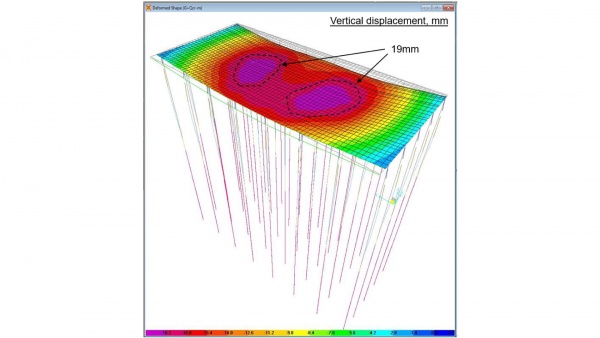Marina Structural Engineering

BLOCKWORK
QUAYWALL
Blockwork quay walls are commonly used all around the world under favorable environmental and operational conditions. They are easily built and highly economical for marine facilities ranging from small coastal walls to heavy-duty cargo ports. The design of blockwork quay walls is highly dependent on wall height, soil conditions and seismicity.
Since its establishment, ARTI Proje has designed and constructed miles of blockwork quay walls in projects undertaken in Turkey, the Middle East and the Indian Ocean. With this extensive experience, we always offer our clients the most favorable and economical solutions thanks to our highly skilled team of specialists in the structural, geotechnical and seismic design of blockwork quay walls.

PILED WHARF
AND JETTY
Piled wharf and piers are among ARTI Proje’s primary fields of expertise. We design piled structures in marine environments that meet multiple operational requirements for ports, harbors, supply piers and heavy-duty platforms. Piles and deck systems are composed of concrete, steel, or a combination of both, which consequently requires high-level design expertise. With our extensive experience, we conduct studies on displacement-based design, soil-structure interaction, non-linear behavior under seismic conditions, kinematic loading on piles, and plastic hinge analysis within the context of marine structure planning, design procedures, and seismic design guidelines in Turkey.
We develop easy-to-build deck systems with precast and cast-in-situ reinforced concrete members. With our experienced team of engineers, and in compliance with international codes and standards, we have designed piled wharf and pier structures for some of the world’s largest ports, in addition to dry and oil terminals in Turkey, the Middle East and Europe. In Candarli, Artı Proje undertook and carried out all the engineering for Turkey’s largest piled breakwater structure. With our extensive knowledge of piled structure construction, we offer a wide range of services, including the conceptual, basic and detailed design of piled structures; project planning; preparation of tender documents; and construction supervision.

SHEETPILE
AND COMBI-WALL
Retaining-type quay structures such as sheet piling and combi-wall systems can be very cost-effective under favorable environmental conditions. For example, sheet piling and combi-wall quays enable dredging works to be carried out after quay construction, permit dredged material to be used in reclamations with soil improvement, and, in some cases, allow for the dry construction of quay walls. Sheet pile and combi-wall systems are built either as cantilever or anchored structures based on quay draft, soil conditions and exposed loads.
We provide extensive engineering services for sheet piling and combi-wall quays in low-seismic zones, especially in the Middle East, in line with international codes and standards. As cutting-edge design approaches and finite element methods continue to develop rapidly, the use of sheet piling and combi-wall quay systems are becoming widespread. Following this trend, ARTI Proje prides itself in offering clients the most economical and reliable solutions.

MARITIME
GEOTECHNICAL DESIGN
Maritime geotechnical design is a vital stage for all types of marine structures, and requires extensive experience and expertise in the field. Soil characteristics and conditions directly shape project budgets and the construction duration of marine structures. Analyzing and identifying the interaction between proposed marine structures and soil conditions is crucial to planning and making design decisions and managing associated risks accordingly. Soil conditions in coastal areas and seas are generally more challenging compared to those found on land. Therefore, the proper identification of ground characteristics is key to achieving reliable, economical and functional designs.
Aware of these requirements, ARTI Proje benefits from years of extensive experience on both the national and international scale to identify interactions between marine structures and soil conditions as required when considering specific project requirements. Our maritime geotechnical design services include soil investigation, bearing capacity analysis and design, slope stability analysis and reclamation, in addition to earthwork and pile design and pile-structure interaction identification. We solve complex and challenging problems and offer clients the most economical solutions through these exhaustive in-house services.

MARITIME
SEISMIC DESIGN
Marine structures and ports located in seismic regions of the world that are inadequately designed against seismic loading can cause non-recoverable social and economic losses. Seismic design aims to minimize operational disruptions with a view to avoiding costly repairs and structural collapse. Determination of performance criteria and requirements is critical for predicting dynamic behavior and ensuring reliable structural design.
We have designed economical and reliable marine structures with predictable seismic responses in seismic regions for over 25 years. We have a wide range of experience in the fields of soil response during earthquakes, kinematic loading on piles from slope movements, response spectrum and time history analysis, liquefaction risk assessment, and displacement-based design in national and international regions. We provide our clients with the best solutions by designing marine structures able to withstand seismic motions in compliance with national and international standards such as ASCE, Eurocode and PIANC.